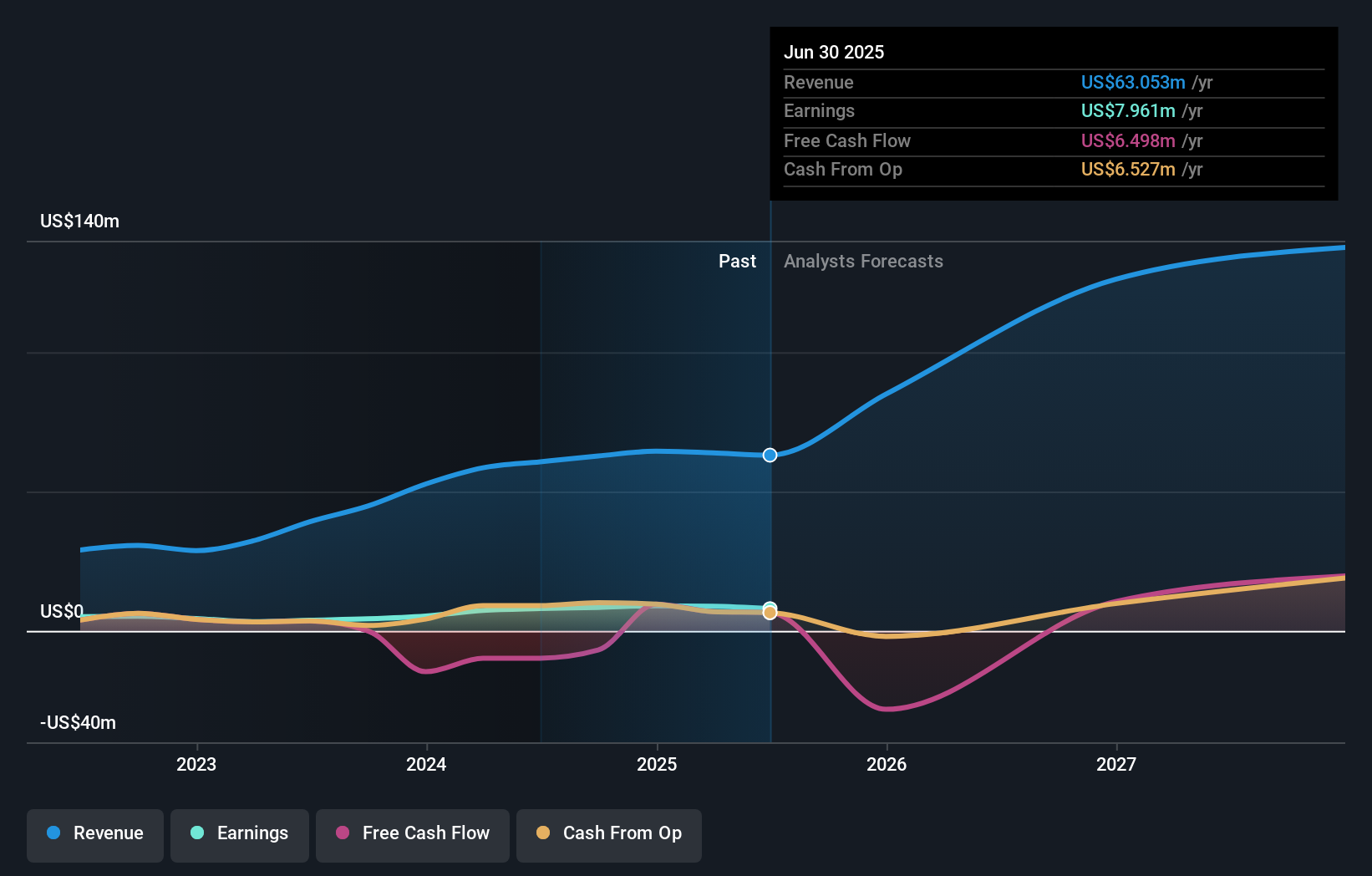- United States
- /
- Personal Products
- /
- NasdaqCM:FTLF
Hedge funds investors in FitLife Brands, Inc. (NASDAQ:FTLF) lost 10% last week but have reaped the benefits of longer-term growth
Key Insights
- Given the large stake in the stock by institutions, FitLife Brands' stock price might be vulnerable to their trading decisions
- 56% of the business is held by the top 2 shareholders
- 14% of FitLife Brands is held by insiders
To get a sense of who is truly in control of FitLife Brands, Inc. (NASDAQ:FTLF), it is important to understand the ownership structure of the business. The group holding the most number of shares in the company, around 55% to be precise, is hedge funds. That is, the group stands to benefit the most if the stock rises (or lose the most if there is a downturn).
No shareholder likes losing money on their investments, especially hedge funds investors who saw their holdings drop 10% in value last week. However, the 13% one-year return to shareholders might have softened the blow. They should, however, be mindful of further losses in the future.
Let's delve deeper into each type of owner of FitLife Brands, beginning with the chart below.
See our latest analysis for FitLife Brands

What Does The Institutional Ownership Tell Us About FitLife Brands?
Institutional investors commonly compare their own returns to the returns of a commonly followed index. So they generally do consider buying larger companies that are included in the relevant benchmark index.
As you can see, institutional investors have a fair amount of stake in FitLife Brands. This can indicate that the company has a certain degree of credibility in the investment community. However, it is best to be wary of relying on the supposed validation that comes with institutional investors. They too, get it wrong sometimes. If multiple institutions change their view on a stock at the same time, you could see the share price drop fast. It's therefore worth looking at FitLife Brands' earnings history below. Of course, the future is what really matters.

It would appear that 55% of FitLife Brands shares are controlled by hedge funds. That's interesting, because hedge funds can be quite active and activist. Many look for medium term catalysts that will drive the share price higher. Looking at our data, we can see that the largest shareholder is Sudbury Capital Management, LLC with 44% of shares outstanding. With 12% and 11% of the shares outstanding respectively, Dayton Judd and Askeladden Capital Management LLC are the second and third largest shareholders. Dayton Judd, who is the second-largest shareholder, also happens to hold the title of Chief Executive Officer.
A more detailed study of the shareholder registry showed us that 2 of the top shareholders have a considerable amount of ownership in the company, via their 56% stake.
Researching institutional ownership is a good way to gauge and filter a stock's expected performance. The same can be achieved by studying analyst sentiments. While there is some analyst coverage, the company is probably not widely covered. So it could gain more attention, down the track.
Insider Ownership Of FitLife Brands
The definition of company insiders can be subjective and does vary between jurisdictions. Our data reflects individual insiders, capturing board members at the very least. Company management run the business, but the CEO will answer to the board, even if he or she is a member of it.
Insider ownership is positive when it signals leadership are thinking like the true owners of the company. However, high insider ownership can also give immense power to a small group within the company. This can be negative in some circumstances.
Our information suggests that insiders maintain a significant holding in FitLife Brands, Inc.. Insiders have a US$25m stake in this US$176m business. It is great to see insiders so invested in the business. It might be worth checking if those insiders have been buying recently.
General Public Ownership
With a 22% ownership, the general public, mostly comprising of individual investors, have some degree of sway over FitLife Brands. While this size of ownership may not be enough to sway a policy decision in their favour, they can still make a collective impact on company policies.
Next Steps:
It's always worth thinking about the different groups who own shares in a company. But to understand FitLife Brands better, we need to consider many other factors.
I like to dive deeper into how a company has performed in the past. You can find historic revenue and earnings in this detailed graph.
But ultimately it is the future, not the past, that will determine how well the owners of this business will do. Therefore we think it advisable to take a look at this free report showing whether analysts are predicting a brighter future.
NB: Figures in this article are calculated using data from the last twelve months, which refer to the 12-month period ending on the last date of the month the financial statement is dated. This may not be consistent with full year annual report figures.
New: AI Stock Screener & Alerts
Our new AI Stock Screener scans the market every day to uncover opportunities.
• Dividend Powerhouses (3%+ Yield)
• Undervalued Small Caps with Insider Buying
• High growth Tech and AI Companies
Or build your own from over 50 metrics.
Have feedback on this article? Concerned about the content? Get in touch with us directly. Alternatively, email editorial-team (at) simplywallst.com.
This article by Simply Wall St is general in nature. We provide commentary based on historical data and analyst forecasts only using an unbiased methodology and our articles are not intended to be financial advice. It does not constitute a recommendation to buy or sell any stock, and does not take account of your objectives, or your financial situation. We aim to bring you long-term focused analysis driven by fundamental data. Note that our analysis may not factor in the latest price-sensitive company announcements or qualitative material. Simply Wall St has no position in any stocks mentioned.
About NasdaqCM:FTLF
FitLife Brands
Provides nutritional supplements and wellness products for health-conscious consumers in the United States and internationally.
Excellent balance sheet and fair value.
Market Insights
Community Narratives



